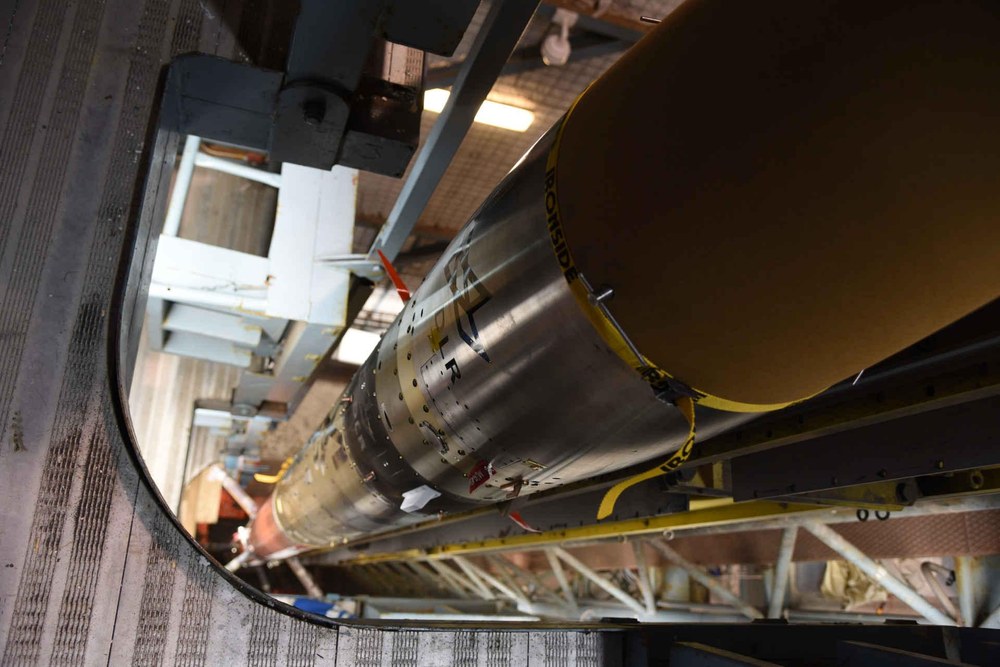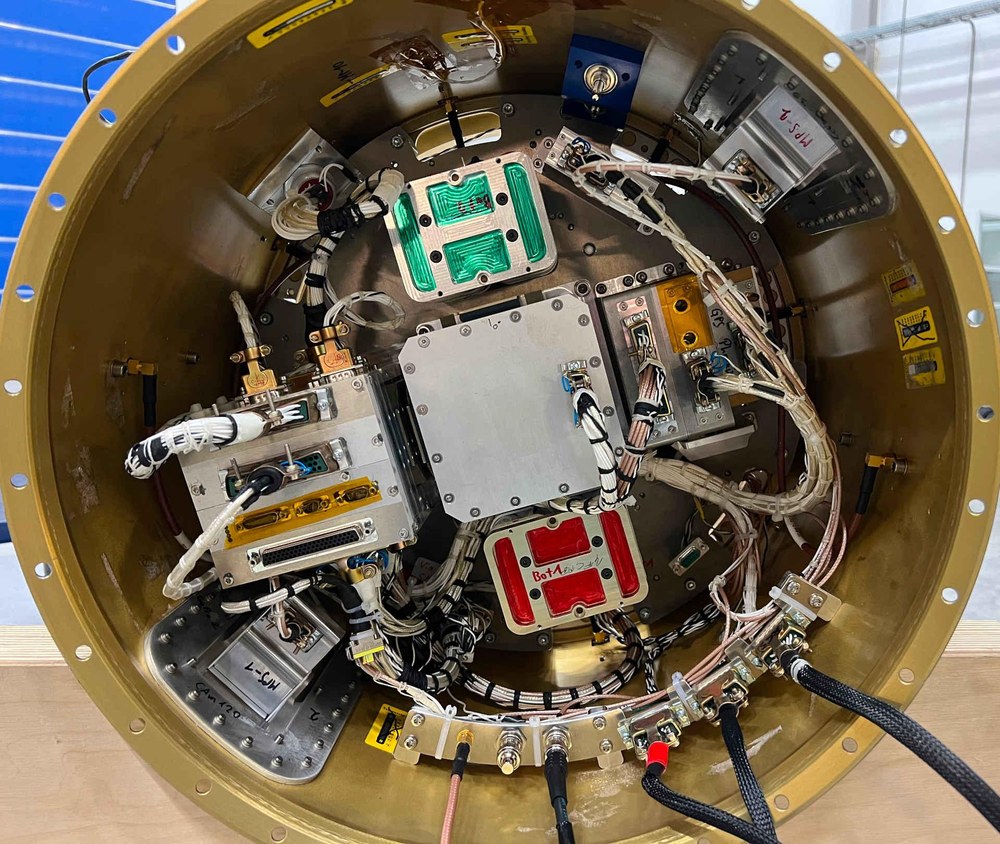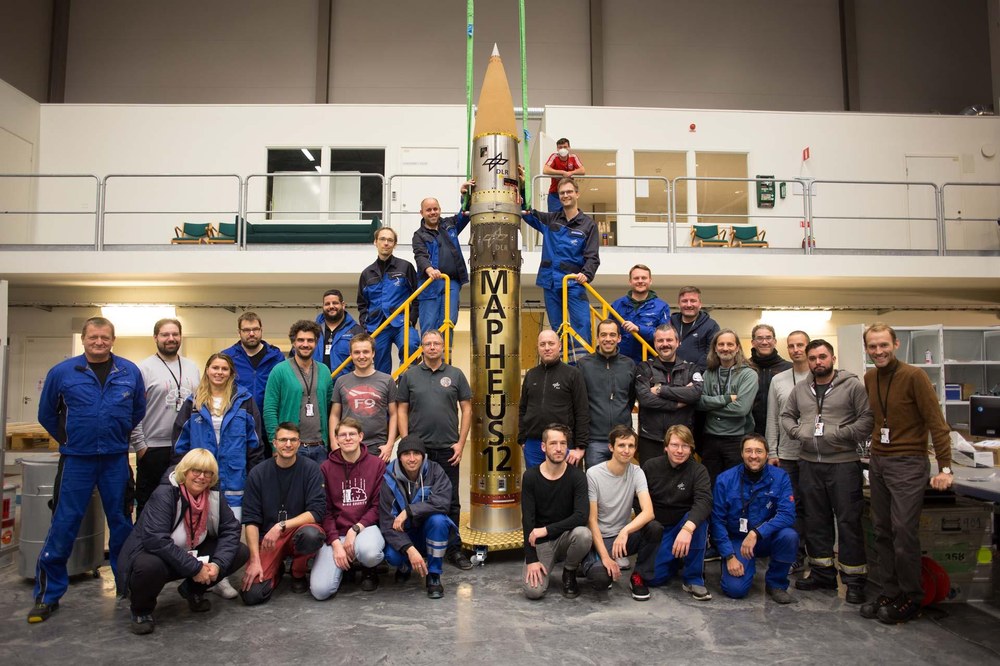Ride into microgravity with a 'spy' amongst numerous experiments



- DLR's MAPHEUS-12 high-altitude research rocket has carried seven experiments into microgravity conditions for around six minutes.
- The 1.6 tonne rocket lifted off from the Esrange Space Center in northern Sweden and reached an altitude of 260 kilometres.
- On board were experiments focusing on gravitational biology and materials physics.
- Focus: Space, microgravity research
On 21 October 2022 at 09:25, the MAPHEUS 12 research rocket of the German Aerospace Center (Deutsches Zentrums für Luft- und Raumfahrt; DLR) took off from the Esrange Space Center near Kiruna in northern Sweden. It reached an altitude of 260 kilometres before descending back to Earth on a parachute. On board for the first time were nerve cells. The goal is to understand how their electrical signals deviate in microgravity. The research team also investigated how the polarity of cells behaves under microgravity in connection with the development of cancer. The flight also served as a test run under space conditions for new types of solar cells as well as for an encryption technology that will protect the sensitive data of life support systems and space vehicles in the future. It also marked the first time that a reusable ignition unit was used in the upper stage.
"With MAPHEUS 12, we have transported an extremely diverse package of experiments into the microgravity of near space for approximately six minutes and recovered it safely,“ says the mission's scientific project manager, Thomas Voigtmann from the DLR Institute of Materials Physics in Space. "We are happy to have the sensitive nerve cells, marine organisms and materials science experiments back on Earth in good condition after a perfect flight.“ Following its 15-minute flight, the payload landed gently by parachute approximately 70 kilometres from the launch site in the tundra of northern Sweden. A recovery team then flew to the landing site and transported the payload hanging from the helicopter back to the launch base, where the team immediately began securing the collected data.
Upgrades to research rocket and ground station
The rocket, which is 11.5 metres long and weighs more than 1.6 tonnes, was the twelfth to be successfully launched from the Mobile Rocket Base (MORABA) of DLR's Space Operations and Astronaut Training facility as part of the MAPHEUS series of experiments. "This flight was the first time that the two-stage rocket had the new service module on board, which offers 10 times faster communication with the ground station and more precise attitude information and features completely redesigned electronics, mechanics and software,“ explains MORABA project manager Alexander Kallenbach. "The new module now serves as the basis for further developments towards intelligent on-board systems planned in the MAPHEUS-D project.“ In addition, MAPHEUS-12 provided the first opportunity for the use of a remanufactured ignition unit on the upper stage, having previously flown on MAPHEUS-9. On the ground, the mission also saw the first use of a novel telemetry system that makes it possible to distribute the signals received from the rocket at various ground stations directly to the respective control consoles for experiments and support systems. This new development is based on components of the Holistic Control Centre (HCC), which will provide a modern, flexible and service-oriented infrastructure for all future space missions at the German Space Operations Center (GSOC). "We are thrilled that the software has now successfully completed its first flight,“ said Felix Huber, Head of DLR's Space Operations and Astronaut Training facility. „This success gives the HCC concept the boost it needs to soon be used on orbital missions as well.“
Neural networks premiere in microgravity
The neurons on board MAPHEUS 12 also experienced their first flight. During the short flight, they were examined directly at the electrophysiological level. The neural network of the Multi-Electrode Array (MEA) experiment consists of cultivated primary neurons distributed over two chips. These find ideal living conditions in a vacuum-tight chamber at 37 degrees Celsius. „During the flight, we were able to record the action potentials of individual neuronal cells as well as the activity of the entire network,“ reports Christian Liemersdorf from the DLR Institute of Aerospace Medicine. Action potentials are the transduced signals between neurons in the brain and central nervous system. Microgravity conditions are thought to influence the neural connections in the brain. "Presumably, this is a major reason why astronauts often suffer from certain cognitive impairments during their stay in space,“ Liemersdorf adds. "We are now evaluating the collected data in detail to understand these possible correlations more precisely.“ Because of the sensitivity of the neurons, it has so far not been possible to carry out experiments with them on the International Space Station ISS.
Relationships between cancer, cell polarity and microgravity
The marine organism Trichoplax adhaerens, which measures only 0.5 millimetres – the simplest multicellular organism in the world – can distinguish between up and down and thus perceive gravity. Approximately 450 specimens of these tiny organisms, which consist of only one upper and one lower cell epithelium, flew into space with MAPHEUS 12 as part of the GraviPlax experiment. The international research team is interested in how the organism reacts genetically to microgravity and how it can be used to learn something about the mechanisms involved in cancer development. "Trichoplax adhaerens has all the important gene groups that can be associated with the loss of polarity and thus the formation of cancer cells,“ explains Jens Hauslage from the DLR Institute of Aerospace Medicine. This means that findings can also be transferred to higher organisms. The final evaluations of the samples will take place in the laboratory in Hanover in the coming weeks. Now, the research partners from DLR, the University of Veterinary Medicine Hannover (TiHo) and the Australian La Trobe University in Melbourne want to understand even more precisely what influence gravity has on the formation of polarity and its evolutionary influence.
A spy travels piggyback
Piggybacking on the GraviPlax board was the test setup of experiment 007/Blofeld, which tests the security of encrypted sensor data streams under space conditions together with industry partner adesso SE. "For spacecraft and life support systems, the operation and monitoring of environmental and vital parameters takes on an increasingly important role. Here, not only a tap-proof connection to the sensors, but also the validity of the data is particularly important,“ explains software architect Christian Kahlo. For the experiment, an implemented ‘spy’ chip tapped encrypted temperature data. This experiment is intended to show that even intercepted data cannot be used by the spy and that the data remains valid for the receiver.
Further experiments
The RAMSES experiment, carried out together with the University of Konstanz, is investigating the directed movement of bacteria in an analogue system, which could be helpful in the future for the targeted introduction of pharmaceutical agents. In the SVALIN project, a research team from the Technical University of Munich is in charge of analysing how the environmental conditions in space influence new types of solar cells mounted on MAPHEUS 12. Together with the Leibniz Institute for New Materials, the SOMEX/ARNIM-II experiment is investigating the agglomeration of gold nanoparticles in microgravity with a view to future applications in microelectronics.
Related Links
Related news
About MAPHEUS
The MAPHEUS (Materialforschung unter Schwerelosigkeit; material physics experiments under microgravity) high-altitude research programme implemented by the DLR Institute of Materials Physics in Space has been operating for 14 years. The annual flights are prepared and carried out by the Mobile Rocket Base (MORABA) department at DLR's Space Operations and Astronaut Training. They provide researchers both within and outside DLR with independent and regular access to experiments in microgravity. In this programme, advances in the field of measurement technologies and the realisation of sophisticated flight hardware go hand in hand with cutting-edge experiments, that focus on the influence of microgravity on biological systems and material processes.
